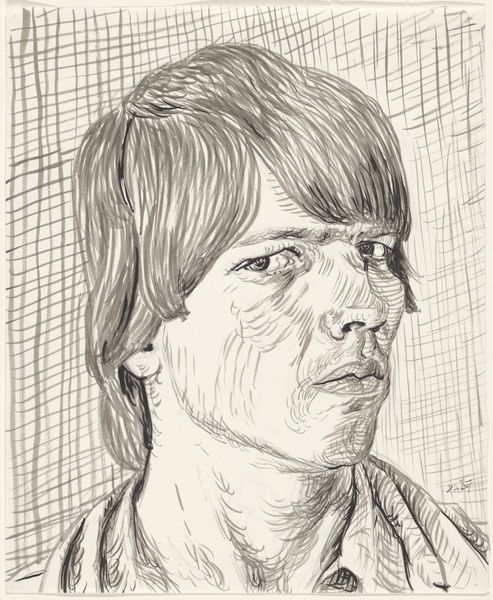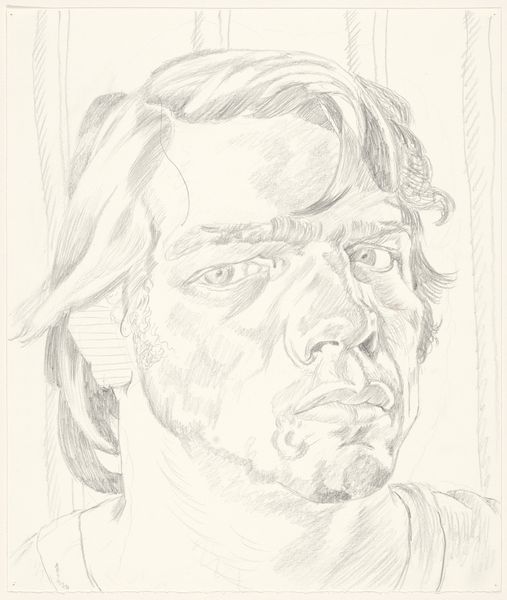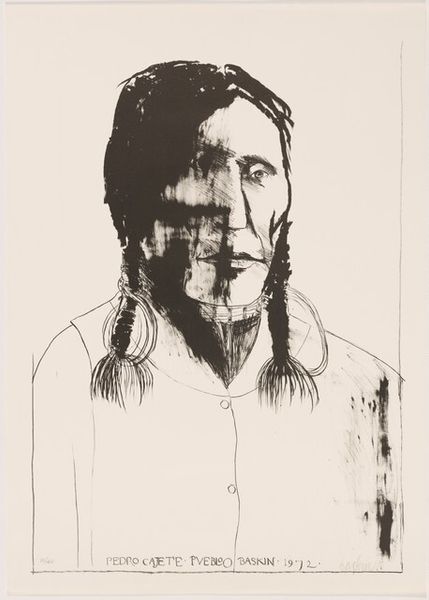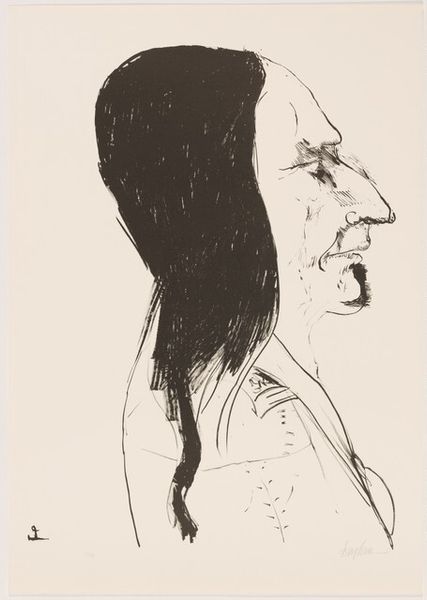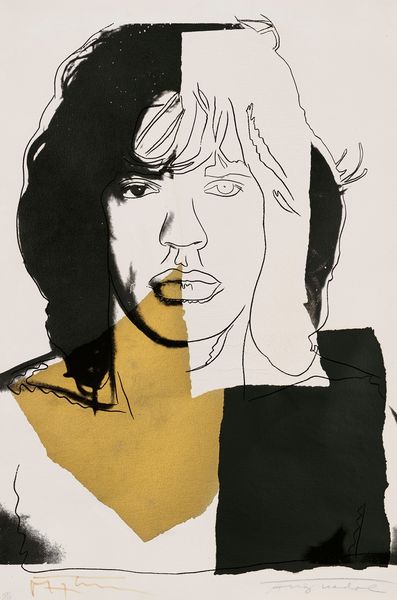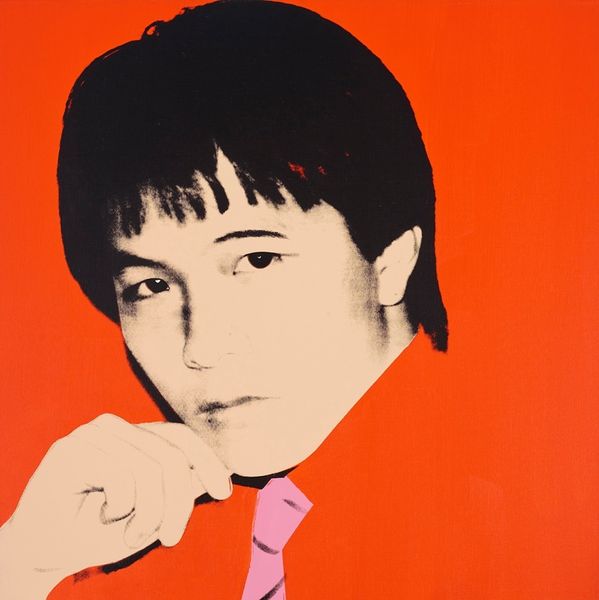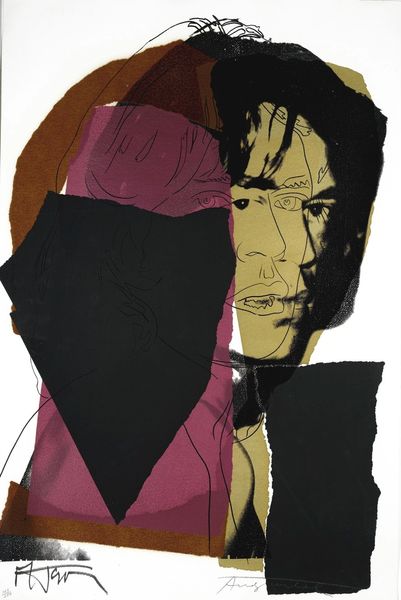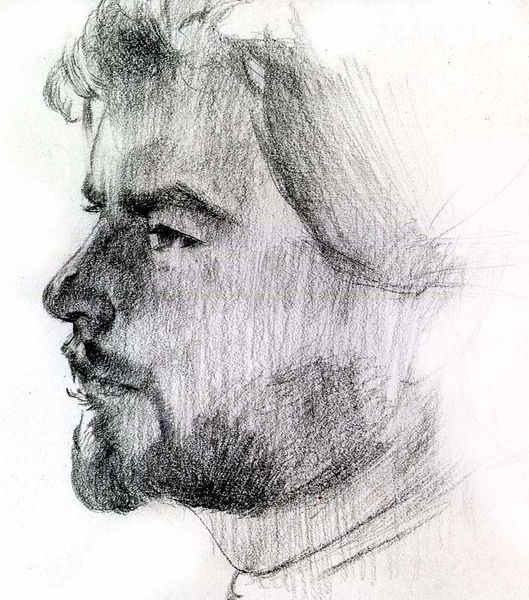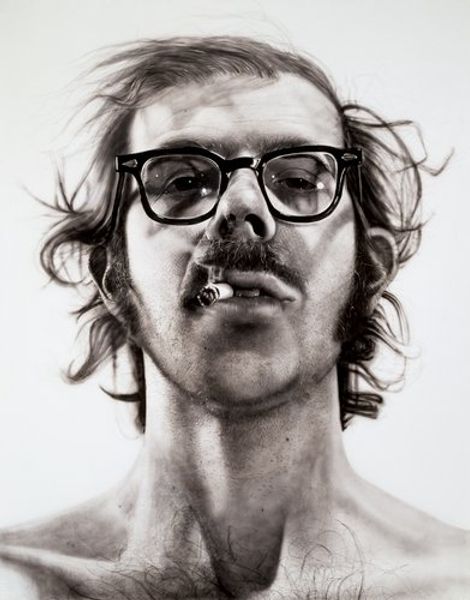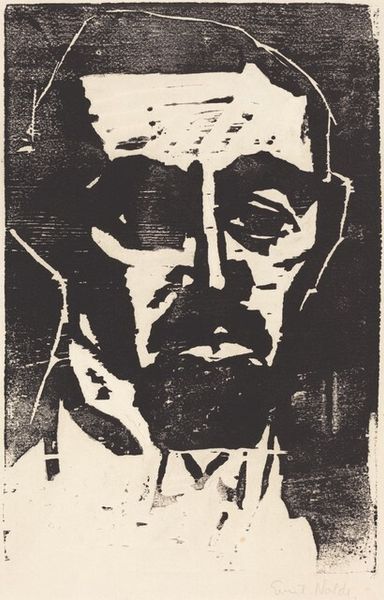
Dimensions: image: 610 x 529 mm
Copyright: © Julian Opie | CC-BY-NC-ND 4.0 DEED, Photo: Tate
Curator: Here we have Julian Opie's striking image, "Gary, popstar." It presents a study in stark contrasts. Editor: Immediately, the flatness grabs me. The simplified black and white areas create a high-impact image. I wonder what kind of printing process it involved. Curator: Indeed. The visual language relies on reduction, refining the figure to essential lines and shapes, almost like a sign. Consider its semiotic function. Editor: Right, but I'm also thinking about the materials. Was it a screenprint? Vinyl? The slickness speaks to mass production, which is central to pop stardom itself. Curator: It's undeniably cool, but I feel a detachment. The reduction almost strips the subject of interiority, making it less about Gary and more about the archetype of the pop figure. Editor: Maybe. To me, the efficient use of line and form feels almost democratic. It is, after all, a portrait designed to be reproduced and consumed. Curator: An interesting approach to celebrity. Editor: Precisely, it's accessible.
Comments
Join the conversation
Join millions of artists and users on Artera today and experience the ultimate creative platform.
tate about 1 month ago
⋮
Gary, popstar is one of a series of six screenprints Opie produced in 1998-9. The series was printed by Advanced Graphics, London and published by Alan Cristea Gallery, London, in an edition of forty plus ten artist’s proofs. Tate’s version is number four in the edition. Other individual prints in the series are Imagine you are walking (Tate P78310), Imagine you are driving (Tate P78311), Landscape? (Tate P78312), Cars? (Tate P78313) and Cityscape? (Tate P78314). The prints were made from hand-cut stencils based on photographs that Opie altered on a computer. He began making portraits derived from photographs of real individuals, pared down to a series of lines and blocks of colour, in 1997. In the black and white versions, to which Gary, popstar belongs, the image is composed of lines and areas of black and white with no grey tones.

